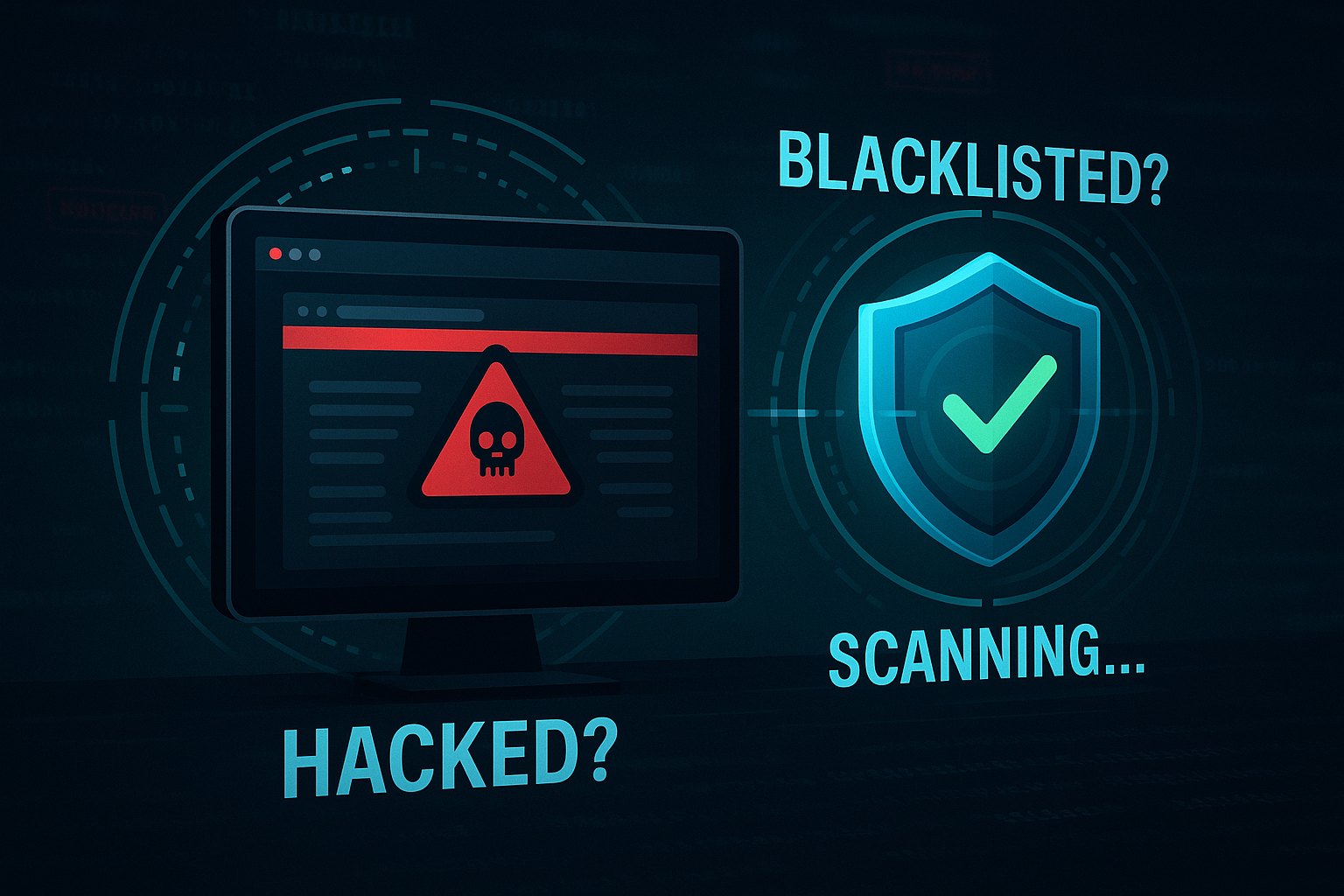Hey folks! In 2025, website hacks are still a big deal. If your site gets compromised, it can mess with your traffic, reputation, and even get blacklisted by search engines like Google. But don’t worry—spotting and fixing it early can save the day. In this guide, we’ll cover signs to watch for, simple ways to scan your site, and what to do next. We’ll use free tools like Sucuri SiteCheck and VirusTotal, plus tips for WordPress users and when to call in pros. Let’s keep your site safe!
Signs Your Website Might Be Hacked or Blacklisted
First things first: How do you know something’s wrong? Hacks can be sneaky, but here are common red flags. If you see a few of these, it’s time to scan.
- Browser Warnings: Visitors see “This site may harm your computer” or “Deceptive site ahead” in Chrome, Firefox, or other browsers.
- Google Alerts: If you’re in Google Search Console, you get emails about malware or hacks. Search results might label your site as “hacked.”
- Site Changes: Weird redirects to spammy sites, pop-ups, or new pages you didn’t add.
- Traffic Drop: Sudden fall in visitors—could be due to blacklisting or redirects.
- Spam Emails: Your site sends junk emails, or legit ones land in spam folders.
- Host Suspension: Your hosting provider shuts down your site for suspicious activity.
- Slow Site or Errors: Unusual slowdowns, crashes, or code snippets in files.
- Blacklist Check: Tools show your IP or domain is flagged by services like Spamhaus or Google Safe Browsing.
If these sound familiar, act fast. Blacklisting can tank your SEO and scare away users.
Step-by-Step: How to Scan Your Site
Scanning is easy with free tools. Start with basics, then dig deeper if needed. Here’s the plan:
1. Basic Malware Check with Sucuri SiteCheck
Sucuri SiteCheck is a free remote scanner that’s great for quick checks. It looks for malware, blacklisting, and outdated software.
- Go to sitecheck.sucuri.net.
- Enter your site’s URL and hit Scan.
- Review results: It flags malware, blacklists (like Google or PhishTank), and security issues.
If it finds problems, note them—it’s not 100% (can’t see server-side stuff), but it’s a solid start.
2. Blacklist Check with VirusTotal
VirusTotal scans URLs against 70+ engines for malware and blacklists. It’s backed by Google and perfect for confirming if your site is flagged.
- Visit virustotal.com.
- Paste your URL in the URL tab and search.
- Check detections: 0/XX means clean; positives show issues. Look at community scores and details.
If blacklisted, request a rescan after cleanup.
3. For WordPress Sites: Use Wordfence
If your site’s on WordPress, install the Wordfence plugin—it’s free and scans for malware, vulnerabilities, and more.
- Log into WP dashboard, go to Plugins > Add New, search for Wordfence.
- Install and activate.
- Run a scan from the Wordfence menu—it checks files, database, and threats in real-time.
Free version has firewall and scans; premium adds extras like 2FA.
4. Ask Your Hosting Provider for a Malware Scan
Many hosts like Hostinger, HostGator, or SiteGround offer free or built-in scans. Contact support to run one.
- Log into your hosting panel (like cPanel).
- Look for security tools (e.g., Malware Scanner in Hostinger).
- If not, chat or email support: “Can you scan my site for malware?” Some do auto-scans and alert you.
They might clean it for free or charge a fee—ask upfront.
5. Hire an Expert If Needed
If scans show big issues or you’re not comfy fixing it, hire pros. Sites like 3ZeroDigital.com offer security services, including malware removal and maintenance. Their packages start around $79 with free security for a year. Other options: Sucuri or MalCare for paid cleanups.
What to Do If Your Site Is Hacked or Blacklisted
Found something? Here’s quick fixes:
- Backup first (clean version if possible).
- Change all passwords and salts in wp-config (for WP).
- Remove malware—use tools or pros.
- Update everything: Core, plugins, themes.
- Request removal from blacklists (e.g., Google Console).
Prevention Tips for 2025
Stay safe: Use strong passwords, enable 2FA, update regularly, and install security plugins. Regular scans help too.
Wrapping Up
Scanning your site regularly keeps hacks at bay. Start with Sucuri and VirusTotal, use Wordfence for WP, and lean on your host or experts like 3ZeroDigital if needed. Your site deserves protection—stay vigilant in 2025! Questions? Comment below.
Last updated: July 21, 2025
